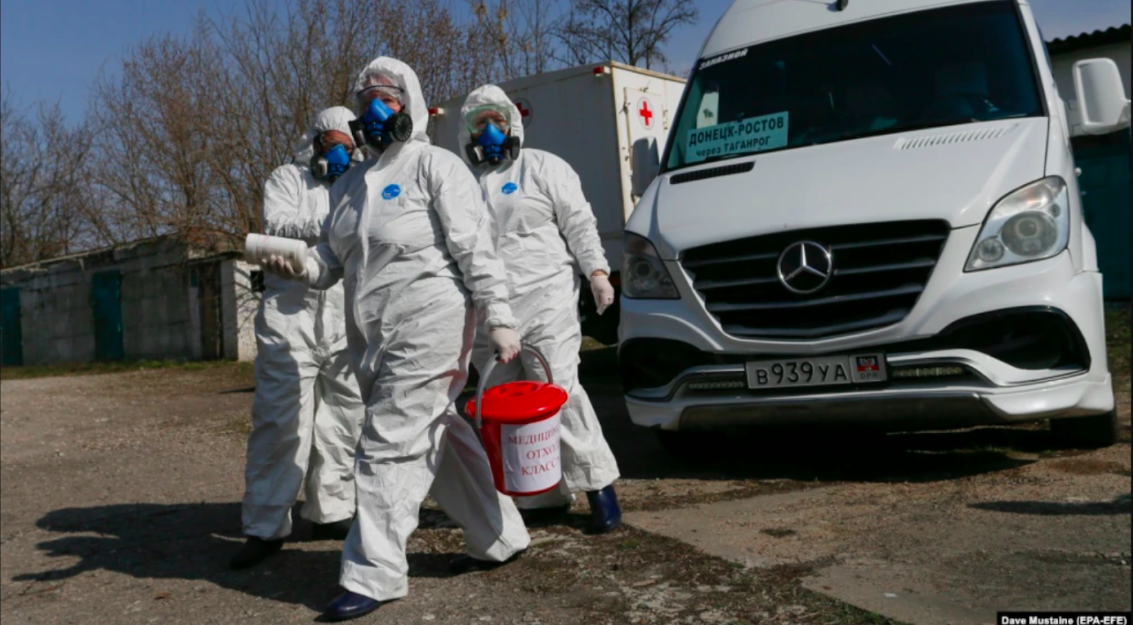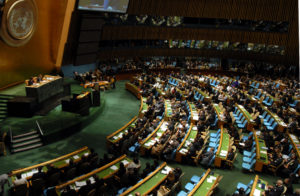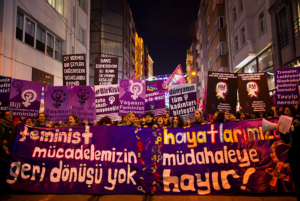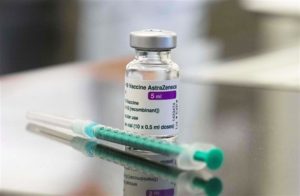Photo credit: https://www.rferl.org/a/ukraine-separatist-areas-coronavirus-threat-considerable/30561756.html
In Ukraine’s second month of its immunization campaign against COVID-19, it’s attempting to reach an ambitious feat — to vaccinate most of the adult population, 70 percent of the country, by year’s end.
In terms of vaccination rates, Ukraine ranks dead last in Europe: averaging about 15,000 to 20,000 vaccinations a day. Taking into account that adults would have to receive both the first and second dose of a vaccine, Ukraine must administer two doses of the vaccine to 48 million people. Deputy Health Minister and Chief Medical Officer Dr. Victor Lyashko has said the country would have to vaccinate 200,000 people daily from May to December. As of April 17, almost half a million Ukrainians have received their first vaccination.
“What we had last month is because of limited access to vaccines,” Lyashko said.
Currently, Ukrainians can receive one of two vaccines: CoviShield and CoronaVac.
CoviShield was developed by Oxford/AstraZeneca and manufactured in India. CoviShield was given to doctors working with COVID-19 patients, personnel and social workers. CoronaVac, which was developed in China, was designated for those who could not come to the vaccination sites along with their guardians. The elderly, people with disabilities or medical conditions would fall into this group.
The reduction of vaccine supply and the slowing of vaccine transportation is one of two reasons for the failure to meet the Ukrainian Health Ministry’s vaccine plan.
Five-hundred-thousand CoviShield vaccines have already arrived in Ukraine, but the total two million vaccines it expected to receive in April and May have been delayed. According to Reuters, India is delaying the next supply of CoviShield vaccines due to a spike in domestic demand. The Ministry of Health expects two million doses of CoronaVac, of which 215,000 doses are already in Ukraine.
AstraZeneca’s CoviShield requires two doses with a varying time frame, but the vaccine has been very effective. On April 7, The State Expert Center of the Ministry of Health of Ukraine reported the high efficacy rate of the vaccine. SEC reports that since the beginning of the vaccination campaign in Ukraine, doctors have received 816 reports of adverse reactions after vaccination with Covishield, which was only 0.28% of the roughly 320,000 vaccinations as of April 7 — 99 percent of the reports were not serious.
CoronaVac vaccines just began going out on April 12th, which means there is not much data of the effectiveness within Ukraine. Local trials in China showed an efficacy rate of 50 percent while the same vaccine was 91 percent effective in Turkey. Ukraine decided to vaccinate for the less mobile groups of the population with CoronaVac, because it has only one dose in the vial. Additionally, doctors are not limited by the time during which the vaccine should be delivered and used. Kovtyonuk recommends that a person should receive two doses of CoronaVac vaccine with an interval of 14-28 days.
According to Pavlo Kovtonyuk, the co-founder of the Ukrainian Health and former Ukrianian Minister of Health, the second reason is the complex transportation of vaccines.
“Last year, when testing for COVID-19 began in Ukraine, it was also initially done only by mobile teams,” said Kovtonyuk. “But we can’t do a lot of tests a day. The same with vaccinations. Mobile crews as they are now are our unique Ukrainian invention that ties our hands.”
Kovtonyuk explained that in Ukraine, mobile vaccination teams first go to doctors, who often know how to perform the vaccination themselves. In other European countries, the mobile teams start with companies and military units.
The Ukrainian Ministry of Health expects to supply more vaccine makers to play into the fold. Ten million vaccines of Novavax are expected to arrive starting in July, and ten million imports of Pfizer/BioNTech vaccines are expected by the end of 2021.
The Ukrainian government confirmed the new vaccine imports under the global COVAX initiative, which the World Health Organization started for lower-income funded nations, who would otherwise be unable to afford these vaccines.
According to a Johns Hopkins University cumulative coronavirus case tracker, most of Ukraine’s neighbors have fewer cases of COVID-19. Belarus at 342,000, Hungary – 746,000, Romania – one million and the Czech Republic – 1.6 million. Ukraine currently has about 2 million cases.
Igor Brovchenko, a Ukrainian Doctor of Physical and Mathematical Sciences, is the coordinator of a group of scientists engaged in mathematical modeling of the spread of COVID-19 in the country. In a sit down with Ukrainian media outlet Hromadske, Bovchenko said that the cases in the country are likely five to six times higher than reported.
Bovchenko explained that the difference in case numbers is due to the age structure of developed and developing nations. Additionally, some deaths due to COVID-19 are counted as deaths from other causes.
“In developed countries, a large proportion of the elderly are the most vulnerable… in developing countries, there are fewer elderly people, so mortality is lower,” Brovchenko said. “At least half of the people who died of coronavirus infection in 2020 are listed as having died of other causes. In 2021, we have not yet made such estimates, because information on overall mortality is becoming known with great delay.”
Bovchenko went on to add that if correct calculations were applied to Ukraine given its age structure, their mortality rate should be at 0.7 percent but is fixed at around two. This means that two-thirds are not even recorded. Ukraine’s numbers are inaccessible because they do not exist. Hospitals have to report how many patients they have and the Ukrianian Ministry of Health adds them up but it is still incomplete. Private and departmental hospitals do not provide such information — which is why Ukrainian president Volodymyr Zelensky’s treatment for COVID-19 at a Kyiv hospital was not included in patient occupancies in the city.
Pavlo Kovtonyuk supports the Ministry of Health’s mass vaccination campaign as he told Hromadske that Ukraine will not be able to get six million vaccinations a month in May—which would be the monthly total should 200,000 Ukrainians get vaccinated daily.
“If we talk about delaying the supply of vaccines, then why can Serbia or Albania get the vaccine, and we do not have it,” Kovtonyuk said. “Everyone has problems with delivery, but for some reason we are the last on this list. I do not think it will really be organized yet. That is, in this case, we have to vaccinate all the CoronaVac we have in a day.”













Be First to Comment